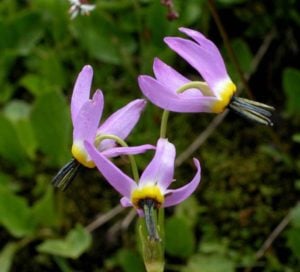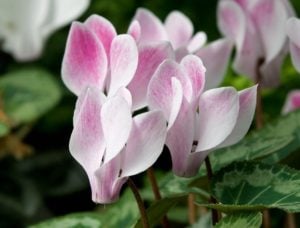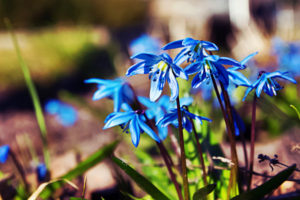
The plant received this name in connection with the shape and color of the flower.
The time of flowering Fritillaries quite short — about 20 days. Its beginning in most species falls on the second half of may. The flowers are large and hanging umbrella, as if lowered his head. The smell of their specific, which can not tolerate moles, shrews, mice. Fritillaries are a great way to keep these animals away from the vegetable garden and flower beds.
Landing Of fritillaries
Many gardeners love fritillaries because it is a perennial plant, and do not need to suffer with planting every year. It multiplies underground bulbs, consisting of 2-6 scales, in the axils of which are kidneys. It is from them that new bulbs develop.

Rules of planting fritillaries bulbs
- Landing time in September-October. If you plant later, mulch the soil and cover with foliage for the winter. But much later can not be planted, otherwise the plants will not grow or simply will not bloom.
- The planting site should be sunny or partial shade.
- Remember that any damage to the bulb of the plant will lead to an unsuccessful outcome. Handle it with care and caution.
- Before planting, it is desirable to treat the bulbs with a solution of potassium permanganate, for example, and sprinkle with charcoal.
- Do not put the bulbs in too wet and cold soil, it can cause rotting. If there is a possibility of stagnation of water at the landing site-make a mound. It is necessary to fill the bottom of the hole for planting with coarse sand. Fine sand is not suitable – there is a risk of rotting young roots.
- The depth of planting is determined, as in all bulbs: multiply the length of the bulb by 3 and plant. Bulbs of short plants are planted to a depth of about 12 cm, tall – about 20 cm.
- Bulbs in the hole is better to have sideways and sprinkle with sand – this will avoid accumulation of moisture.
- The soil should be light and nutritious, with the addition of peat.
Reproduction of fritillaries
There are two ways:
1. Reproduction of plants by seeds
- This method is suitable for all types of plants.
- Seeds can be collected after complete drying boxes of plants. It is recommended to sow them in the soil immediately after collection.
- The soil should be nutritious, as the plant will grow here for several years. Annually for seedlings make the dressing.
- The depth of seed planting is 1 cm.
- Seeds should be sown in furrows about 10 cm wide for good drainage. Between the rows should be the same distance. On top of the seeds sprinkle 2 cm layer of peat.
- Seedlings will appear next spring.
- Already biennial bulbs should be dug out and stored in the summer in a dry place. This is done to protect them from soil moisture. This is a relatively complex process, some bulbs may die.
- If you grow seedlings of plants resistant to moisture, they can be grown in one place for 4 years before flowering, then planted.
2. Vegetative reproduction
One parent bulb can be divided into several substituents. In many species of fritillaries, the main bulb increases in size and forms baby bulbs. It is these bulbs before flowering have to grow for several years. Chive-honey can be easily separated from the parent. You can dig up the bulbs once every two years, then the detachable bulb baby will be larger and it will be easy to separate.
You can artificially divide the onion. To do this, break the bulb, which consists of two scales, dry the separated parts. Resistance to drying and have less than whole onions, so plant them early.
Growing and caring for fritillaria
- Watering is carried out, remembering that even the bulbs of faded plants should not be in dry soil. Requires watering 1-2 times a month.
- Feed the plants twice a season with dry fertilizers-in the third decade of April and after flowering. During flowering, you can use wood ash as a fertilizer. It should be scattered around the plant, then mulch it with humus or peat about 3 cm.
- The above-ground part of the faded plant should be cut in July.
- Mark where you planted a grouse so you don’t accidentally dig this place.
Types of fritillaries
Fritillaria imperialis with inflorescences of lemon or orange color. Leaves are sharp and shiny. Reaches a height of 1 m. The beginning of flowering occurs in may.

Fritillaria meleagris with red-brown flowers in the form of bells. Inside the flowers are spots arranged in staggered order.

Fritillaria ruthenica with the upper leaves twisted in the form of antennae. Has a high stem. Grouse blooms in March and April. Listed in the Red book.

Fritillaria michailovskyi has flowers Burgundy flowers with a yellow edge. The height of the grouse is about 20 cm.

Fritillaria persica strewn with many colors of purple color.

Fritillaria camschatcensis it has purple or bronze flowers, grows up to 60 cm.





Leave a Reply